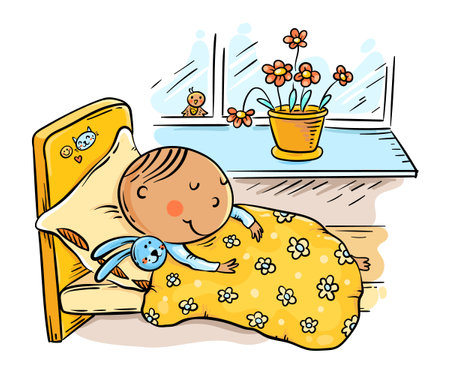Introduction to Nursery Life in the UK
The British nursery system is a unique blend of early years education and care, designed to support children from as young as six weeks up to five years old. In the UK, nurseries are not just about play; they play a crucial role in preparing children for school, fostering social skills, and supporting development through structured routines. Some key terminology you’ll often hear includes “EYFS” (Early Years Foundation Stage), “key person” (your child’s main carer), and “sessions” (blocks of time your child attends). What sets UK nurseries apart from those in other countries is their robust regulatory framework and focus on individual learning journeys, guided by the EYFS statutory framework. Below is a quick comparison of nursery systems:
| Feature | UK Nurseries | Other Countries |
|---|---|---|
| Age Range | 6 weeks – 5 years | Varies (often 2 – 6 years) |
| Curriculum Framework | EYFS statutory framework | Diverse; may lack national standard |
| Staff Qualifications | Mandatory early years qualifications | Requirements differ by country |
| Inspection & Regulation | Ofsted (England) or equivalents in devolved nations | May be less regulated or differently monitored |
| Session Structure | Full day/half day, flexible options common | Often fixed hours or less flexibility |
Navigating British nursery life means understanding these terms and appreciating the focus on both care and learning, setting the foundation for your child’s school journey.
Typical Daily Schedules
Understanding a typical nursery schedule in the UK can help parents feel confident about their child’s daily routine. British nurseries generally follow a structured day designed to balance learning, play, and rest. Here’s a breakdown of what you can expect from a standard nursery day:
Drop-off and Pick-up Times
Most nurseries in the UK open between 7:30 am and 8:00 am, with flexible drop-off times to accommodate working parents. Collection usually occurs between 5:30 pm and 6:00 pm, depending on the setting. Some nurseries offer half-day options or extended care for additional flexibility.
Typical Nursery Day Schedule
| Time | Activity |
|---|---|
| 7:30–9:00 am | Arrival & Free Play |
| 9:00–9:30 am | Morning Circle/Group Time |
| 9:30–10:00 am | Snack Break |
| 10:00–11:30 am | Learning Activities & Outdoor Play |
| 11:30 am–12:00 pm | Lunchtime |
| 12:00–1:30 pm | Nap/Quiet Time (for younger children) |
| 1:30–3:00 pm | Planned Activities & Free Choice Play |
| 3:00–3:15 pm | Afternoon Snack |
| 3:15–5:30 pm | Story Time, Outdoor Play, & Pick-up Window |
Meal Routines and Snacks
Most UK nurseries provide healthy meals and snacks, with menus adhering to government nutritional guidelines. Lunch is often served hot, while snacks typically include fruit, crackers, or toast. Parents are encouraged to inform staff of any allergies or dietary requirements.
Naps and Rest Periods
Younger children are given time for naps or quiet rest after lunch, while older preschoolers may engage in calm activities such as reading or puzzles. Staff create a comfortable environment to support restful breaks.
This structure ensures children have a balanced day filled with learning opportunities, social interaction, nourishment, and rest—helping them thrive during their time at nursery.

3. Essential Routines and Activities
British nurseries are well-known for their thoughtfully structured daily routines, designed to nurture young children’s development while ensuring a sense of security and predictability. Parents can expect each day to blend a range of essential activities, striking a balance between learning and play. Here’s an insight into what makes up a typical nursery day in the UK:
Key Daily Activities
| Activity | Description | Typical Time |
|---|---|---|
| Structured Learning Sessions | Guided activities such as phonics, early maths, and creative arts led by qualified staff, designed to foster cognitive skills. | Morning or after snack time |
| Free Play | Child-led play using toys, puzzles, role-play areas, and construction materials that encourage exploration and social interaction. | Throughout the day |
| Outdoor Time | Supervised play in safe outdoor spaces, including gardens or playgrounds, supporting physical development and fresh air exposure. | Morning and afternoon slots |
| Circle Time | A group gathering where children sing songs, share stories, discuss the day’s theme, or talk about emotions—building communication and community spirit. | Start or end of session |
| Snack & Meal Breaks | Nutritionally balanced snacks and meals eaten together at tables to encourage social skills and healthy eating habits. | Mid-morning & lunch time |
The British Approach: Nurture Through Routine
The UK nursery system values both structure and flexibility. While there are set times for core routines like meals and group sessions, children are also given ample opportunity to choose their own activities during free play. This dual approach supports independence while providing clear expectations—something many British parents appreciate for its positive impact on behaviour management and school readiness.
Why Circle Time Matters
Circle time is particularly cherished in British nurseries. It’s not just about singing “Wheels on the Bus” or sharing the weather; it’s a cornerstone for building confidence in speaking out, listening to others, and understanding group dynamics from an early age.
The Value of Outdoor Play in the UK Climate
No matter the weather (wellies and raincoats are nursery staples!), outdoor play is prioritised year-round. Nurseries often have policies encouraging children to embrace outdoor activities unless conditions are extreme—reflecting the British belief in resilience and the value of fresh air for young minds.
4. Staff Ratios and Supervision
One of the most important aspects parents should consider when choosing a nursery in the UK is the staff-to-child ratio. The Early Years Foundation Stage (EYFS) framework sets out strict guidelines to ensure children receive adequate supervision and care throughout the day. These ratios are designed to maintain a safe and nurturing environment for every child, allowing practitioners to provide individual attention while supporting group activities.
UK Nursery Staff-to-Child Ratio Requirements
| Age Group | Minimum Staff:Child Ratio | Key Points |
|---|---|---|
| Under 2 years | 1:3 | Each member of staff may look after up to three babies or toddlers under two years old. |
| 2 years old | 1:4 | For two-year-olds, one adult can supervise up to four children. |
| 3 years and over (nursery schools/maintained settings) | 1:13 (with qualified teacher) | If a qualified teacher is present, the ratio is higher. Otherwise, its lower in private settings. |
| 3 years and over (other settings) | 1:8 | In non-maintained settings, one adult supervises up to eight children aged three or over. |
What Parents Should Expect Regarding Supervision
The regulated ratios mean that your child will always have access to a caring adult, whether they need help with an activity, reassurance, or simply someone to talk to. Supervision at UK nurseries goes beyond simple headcounts—practitioners are expected to engage with children, support their learning, and ensure safety at all times. Nurseries also have designated key workers for each child, providing continuity of care and building trusted relationships.
The Importance of Key Workers
A key worker system is standard across UK nurseries. This means your child will have a named staff member who takes a special interest in their development, communicates with you about progress and concerns, and serves as your main point of contact within the nursery.
Summary Table: What Parents Should Look For
| Aspect | What to Expect |
|---|---|
| Supervision Quality | Active engagement, not just observation; prompt response to needs. |
| Staff Qualifications | Appropriate training in early years education and safeguarding. |
| Continuity of Care | A consistent key worker for your child whenever possible. |
| Open Communication | Regular updates about your childs day and wellbeing. |
Understanding these staff ratios and supervision standards gives parents peace of mind that their children are safe, well cared for, and given the attention they need for healthy development during their nursery days in the UK.
5. Settling In and Transitioning
One of the most important aspects of starting nursery in the UK is ensuring a smooth settling-in period for both children and parents. Nurseries across the country are well-versed in supporting families through this transition, recognising that each child’s needs and temperament are unique. Here’s what parents can expect and how nurseries typically handle settling-in and separation routines.
Gradual Settling-In Process
Most UK nurseries adopt a gradual approach to help children adjust comfortably. This phased introduction allows children to become familiar with the environment, staff, and other children, reducing anxiety for both little ones and their parents.
| Settling-In Stage | Description | Typical Duration |
|---|---|---|
| Initial Visit | Short stay with parent present; child explores play areas and meets key workers. | 30-60 minutes |
| Short Sessions Alone | Child stays without parent for brief periods; parent remains on-site or nearby. | 1-2 hours over 1-3 days |
| Extended Sessions | Child gradually extends time at nursery, including mealtimes or naps if appropriate. | Half-days to full sessions over 1-2 weeks |
Separation Routines: Easing Anxiety
Nurseries are skilled at managing separation anxiety. Staff encourage consistent goodbye routines—such as a quick hug or special phrase—which reassure children that their parent will return. It’s normal for some children to need extra support, and experienced practitioners offer comfort items from home or distraction through engaging activities.
Communication with Parents
Open and regular communication is highly valued in British nurseries. Parents receive daily updates, either verbally during pick-up or via digital platforms (such as apps or emails), detailing their child’s mood, meals, naps, and milestones. Scheduled meetings with key workers provide opportunities to discuss progress or concerns in more detail.
Advice for Parents: Making Transitions Easier
- Stay Positive: Children often pick up on parental emotions. Displaying confidence helps them feel secure.
- Avoid Sneaking Away: Always say goodbye to build trust rather than leaving unnoticed.
- Establish a Routine: Consistent drop-off times and rituals create predictability and reassurance.
- Keep Communication Open: Share any worries with nursery staff—they have extensive experience helping families settle in.
The settling-in process may feel daunting initially, but UK nurseries are exceptionally supportive, ensuring children—and their parents—feel welcomed, understood, and confident in this new chapter.
6. Parent Communication and Involvement
One of the key features of nurseries in the UK is their commitment to keeping parents informed and actively involved in their child’s early years experience. Open communication between staff and families helps to build trust, ensure consistent care, and support a child’s development both at nursery and at home.
Regular Feedback Methods
Most nurseries use a variety of channels to provide parents with updates on their child’s progress, daily routines, and any noteworthy events. The table below outlines some of the most common methods:
| Feedback Method | Description |
|---|---|
| Daily Diaries/Communication Books | Written notes sent home each day detailing meals, naps, activities, and moods. |
| Parent-Staff Handover | Brief conversations at drop-off or pick-up times to share highlights or concerns. |
| Email & App Updates | Digital platforms offering real-time photos, activity logs, or newsletters. |
| Parent Evenings | Scheduled meetings to discuss development milestones and set goals together. |
Opportunities for Parental Involvement
Nurturing a strong partnership with families is highly valued. Nurseries often encourage parents to engage in various aspects of nursery life beyond routine updates. Here are some typical ways parents can get involved:
- Stay-and-Play Sessions: Scheduled times for parents to join in classroom activities alongside their children.
- Volunteering: Helping out during special events, outings, or themed learning weeks.
- Workshops: Attending sessions on topics such as child nutrition, sleep routines, or early literacy.
The British Approach to Parent Partnerships
The UK nursery sector tends to emphasise a collaborative relationship where staff value parental input about children’s interests, routines at home, and cultural backgrounds. This approach ensures that care provided at nursery aligns as closely as possible with family values and expectations.
Summary
Effective communication and parental involvement are central pillars of the nursery experience in the UK. By making use of regular feedback methods and encouraging active participation, nurseries help create a supportive community focused on each child’s well-being and development.
7. What to Pack and Prepare
When sending your child to nursery in the UK, preparing the right items is essential for a smooth transition and a comfortable day. Each nursery may have its own specific requests, but there are several universal essentials every British parent should consider. Below, youll find practical tips and a helpful table to ensure nothing important gets left behind.
Clothing: Dress for the British Weather
The UK weather can be unpredictable, so dressing your child in layers is key. Nurseries often encourage outdoor play, rain or shine, so waterproofs and wellies are a must. Label all clothing clearly with your childs name to avoid mix-ups.
Recommended Clothing Checklist
| Item | Why Its Needed |
|---|---|
| Spare clothes (tops, bottoms, underwear) | For accidents or messy activities |
| Waterproof coat & wellies | Outdoor play in typical British weather |
| Sun hat & sunscreen (summer) | Protection during outdoor activities |
| Warm hat & gloves (winter) | Cold weather comfort |
| Indoor shoes/slippers | Clean footwear for inside the nursery |
Comfort Items: Settling In with Familiarity
If your child has a favourite cuddly toy, blanket or dummy, most nurseries will allow them as comforters during rest time or when settling in. Always check the nursery’s policy first—some may limit items to reduce lost property or sharing among children.
Food and Drink: What You Need to Provide
Many UK nurseries offer meals and snacks, but some may ask parents to send packed lunches or labelled water bottles. If your child has allergies or dietary requirements, provide clear written instructions and discuss these with staff in advance.
Packed Lunch Tips (If Required)
- Opt for easy-to-eat finger foods like sandwiches, chopped fruit, and cheese cubes.
- Avoid nuts or other allergens as per nursery guidelines.
- Label lunchboxes and bottles with your child’s full name.
Required Paperwork: Staying Organised
You’ll need to bring certain documents on your child’s first day at nursery:
- Completed registration forms (if not already submitted)
- Medical information including allergy plans and medication consent forms
- Emergency contact details (updated regularly)
- Authorisation forms for collection by other adults if necessary
A Final Word of Advice
Packing for nursery needn’t be stressful if you follow the nursery’s checklist and communicate openly with staff. Remember that being prepared helps both you and your child feel more confident about starting this exciting new routine.


